Additional publications can be found at: Google Scholar
Leonard A., . . .R. Berg, . . .P. Nietlisbach, . . .S.K Sakaluk, . . .C.F. Thompson, . . .A. Alberdi. 2024. A global initiative for ecological and evolutionary hologenomics. Trends in Ecology & Evolution 39: 616-620.
DiSciullo, R.A., A.M. Forsman, R.R. Fitak, J. Hunt, P. Nietlisbach, C.F. Thompson, and S.K. Sakaluk. 2024. Male song structure predicts offspring recruitment to the breeding population in a migratory bird. Evolution 78: 1054-1066.
Duncan, P.A., A.M. Tauber, S.K. Sakaluk, and C.F. Thompson. 2024. Interactive effects of increased nestbox temperature and vitamin E on nestling growth are attenuated by plasticity in female incubation effort. Ethology 130: 1-13.
DiSciullo, R.A., S.K. Sakaluk, and C.F. Thompson. 2024. Song structure of male northern house wrens and patterns of song production and delivery across the nesting cycle. Journal of Ornithology 165: 203-216.
Di Giovanni, A.J., J. Villa, M. Stanback, C.F. Thompson, S.K. Sakaluk, M.E. Hauber, and D. Hanley. 2023. Decision rules for egg color-based rejection by two cavity-nesting hosts of the brown-headed cowbird. Journal of Experimental Biology 226(14): jeb245188.
Rittinger, M.A., R.M. Bowden, L.A. Sauers, R.T. Paitz, C.J. Poppe, C.F. Thompson, and S.K. Sakaluk. 2022. Sex-specific effects of hatching order on nestling baseline corticosterone in a wild songbird. General and Comparative Endocrinology. 318: 113964.
Thompson, C.F., K.E. Hodges, N.T. Mortimer, A.D. Vrailas-Mortimer, S.K.
Sakaluk, and M.E. Hauber. 2022. Avian eggshell coloration predicts
shell-matrix protoporphyrin content. Canadian Journal of Zoology 100: 77-81.
Thompson, C.F., and K.P. Eckerle. 2022. Yellow-breasted Chat (Icteria virens), version 2.0. In Birds of the World (P. G. Rodewald and B. K. Keeney, Editors). Cornell Laboratory of Ornithology, Ithaca, NY, USA.
Jenkins, J.B., A.J. Mueller, C.F. Thompson, S.K. Sakaluk, and E.K. Bowers. 2021. Female birds monitor the activity of their mates while brooding nest-bound young. Animal Cognition 24: 613-628.
Hodges, K.E., N.T. Mortimer, A.D. Vrailas-Mortimer, S.K. Sakaluk, and C.F. Thompson. 2020. Connecting the dots: avian eggshell pigmentation, female condition and paternal provisioning effort. Biological Journal of the Linnean Society 130: 114-127.
Bowers, E.K., C.F. Thompson, R.M. Bowden, and S.K. Sakaluk. 2019. Post-hatching parental care and offspring growth vary with maternal corticosterone level in a wild bird population. Physiological and Biochemical Zoology 92: 496-504.
DiSciullo, R.A, C.F. Thompson, and S.K. Sakaluk. 2019. Perceived threat to paternity reduces likelihood of paternal provisioning in house wrens. Behavioral Ecology 30: 1336-1343.
Bowers, E.K., J.B. Jenkins, A.J. Mueller, K.D. Miller, C.F. Thompson, and S.K. Sakaluk. 2019. Condition-dependent begging elicits increased parental investment in a wild bird population. American Naturalist 193: 725-737.
Hodges, C.J., D.M. Poorboy, B.M. Weber, and C.F. Thompson. 2019. Beak abnormality hinders provisioning ability and reduces body condition of a female house wren (Troglodytes aedon). Wilson Journal of Ornithology 131: 128-134.
Poorboy, D.M., E.K. Bowers, S.K. Sakaluk, and C.F. Thompson. 2018. Experimental cross-fostering of eggs reveals effects of territory quality on reproductive allocation. Behavioral Ecology 29: 1190-1198.
Weber, B.M., E.K. Bowers, K.A. Terrell, J.F. Falcone, C.F. Thompson, and S.K. Sakaluk. 2018. Pre- and postnatal effects of experimentally manipulated maternal corticosterone on growth, stress reactivity and survival of nestling house wrens. Functional Ecology 32: 1995-2007.
Sakaluk, S.K., C.F. Thompson, and E.K. Bowers. 2018. Experimental manipulation of incubation period reveals no apparent costs of incubation in house wrens. Animal Behaviour 137: 169-177.
Bowers, E.K., S.K. Sakaluk, and C.F. Thompson. 2017. Interactive effects of parental age on offspring fitness and age-assortative mating in a wild bird. Journal of Experimental Zoology 327A: 302-310.
Dorset, E.E., S.K. Sakaluk, and C.F. Thompson. 2017. Behavioral plasticity in response to perceived predation risk in breeding house wrens. Evolutionary Biology 44: 227-239.
Bowers, E.K., C.F. Thompson, and S.K. Sakaluk. 2017. Maternal natal environment and breeding territory predict the condition and sex ratio of offspring. Evolutionary Biology 44: 11-20.
Will, D.S., E.E. Dorset, C.F. Thompson, S.K. Sakaluk, and E.K. Bowers. 2017. Size of nest-cavity entrance influences male attractiveness and paternal provisioning in house wrens. Journal of Zoology 302: 1-7.
Bowers, E.K., J.L. Grindstaff, S.S. Soukup, N.E. Drilling, K.P. Eckerle, S.K. Sakaluk, and C.F. Thompson. 2016. Spring temperatures influence selection on breeding date and the potential for phenological mismatch in a migratory bird. Ecology 97: 2880-2891.
Strange, M.S., R.M. Bowden, C.F. Thompson, and S.K. Sakaluk. 2016. Pre- and postnatal effects of corticosterone on fitness-related traits and the timing of endogenous corticosterone production in a songbird. Journal of Experimental Zoology 325A: 347-359.
Bowers, E.K., R.M. Bowden, C.F. Thompson, and S.K. Sakaluk. 2016. Elevated corticosterone during egg production elicits increased maternal investment and promotes nestling growth in a wild bird. Hormones and Behavior 83: 6-13.
Bowers, E.K., S.K. Sakaluk, and C.F. Thompson. 2016. No effect of blood sampling or phytohaemagglutinin injection on post-fledging survival in a wild songbird. Ecology and Evolution 6: 3107-3114.
Bowers, E.K., C.F. Thompson, and S.K. Sakaluk. 2016. Within-female plasticity in sex allocation is associated with a behavioral polyphenism in house wrens. Journal of Evolutionary Biology 29: 602-616.
Bowers, E.K., A.M. Forsman, B.S. Masters, B.G.P. Johnson, L.S. Johnson, S.K. Sakaluk, and C.F. Thompson. 2015. Increased extra-pair paternity in broods of aging males and enhanced recruitment of extra-pair young in a migratory bird. Evolution 69: 2533-2541.
Hodges, C.J., E.K. Bowers, C.F. Thompson, and S.K. Sakaluk. 2015. Cascading costs of reproduction in female house wrens induced to lay larger clutches. Journal of Evolutionary Biology 28: 1383-1393.
Bowers, E.K., A. White, A. Lang, L. Podgorski, C.F. Thompson, S.K. Sakaluk, W.B. Jaeckle, and R.G. Harper. 2015. Eggshell porosity covaries with egg size among female house wrens (Troglodytes aedon) but is unrelated to incubation onset and egg-laying order within clutches. Canadian Journal of Zoology 93: 421-425.
Bowers, E.K., R.M Bowden, S.K. Sakaluk, and C.F. Thompson. 2015. Immune activation generates corticosterone-mediated terminal reproductive investment in a wild bird. American Naturalist 185: 769-783.
Bowers, E.K., C.F. Thompson, and S.K. Sakaluk. 2015. Persistent sex-by-environment effects on offspring fitness and sex-ratio adjustment in a wild bird population. Journal of Animal Ecology 84: 473-486.
Barnett, C.A., T.N. Suzuki, S.K. Sakaluk, and C.F. Thompson. 2015. Mass-based condition measures and their relationship with fitness: in what condition is condition? Journal of Zoology 296: 1-5.
Sakaluk, S.K., A.J. Wilson, E.K. Bowers, L.S. Johnson, B.S. Masters, B.G.P. Johnson, L.A. Vogel, A.M. Forsman, and C.F. Thompson. 2014. Genetic and environmental variation in condition, cutaneous immunity, and haematocrit in house wrens. BMC Evolutionary Biology 14: 242.
Lothery, C.J., C.F. Thompson, M.L. Lawler, and S.K. Sakaluk. 2014. Food supplementation fails to reveal a trade-off between incubation and self-maintenance in female house wrens. PLoS ONE 9(9): e106260.
Bowers, E.K., D. Nietz, C.F. Thompson, and S.K. Sakaluk. 2014. Parental provisioning in house wrens: effects of varying brood size and consequences for offspring. Behavioral Ecology 25: 1485-1493.
Bowers, E.K., C.J. Hodges, A.M. Forsman, L.A. Vogel, B.S. Masters, B.G.P. Johnson, L.S. Johnson, C.F. Thompson, and S.K. Sakaluk. 2014. Neonatal body condition, immune responsiveness, and hematocrit predict longevity in a wild bird population. Ecology 95: 3027-3034.
Barnett, C.A., S.K. Sakaluk, and C.F. Thompson. 2014. Aggressive displays by male house wrens are composed of multiple components that predict attack. Journal of Field Ornithology 85: 56-62.
Thompson, C.F., S.K. Sakaluk, B.S. Masters, B.G.P. Johnson, L.A. Vogel, A.M. Forsman, and L.S. Johnson. 2014. Condition-dependent sex difference in nestling house wren (Troglodytes aedon) response to phytohaemagglutinin injection. Canadian Journal of Zoology 92: 1-7.
Bowers, E.K., C.F. Thompson, and S.K. Sakaluk. 2014. Offspring sex ratio varies with clutch size for female house wrens induced to lay supernumerary eggs. Behavioral Ecology 25: 165-171.
Thompson, C.F., and S.K. Sakaluk. 2013. Science or mammon? The choice should be easy. International Society of Behavioral Ecology Newsletter 25: 5.
Bowers, E.K., S.K. Sakaluk, and C.F. Thompson. 2013. Sibling cooperation influences the age of nest-leaving in an altricial bird. American Naturalist 181: 775-786.(Featured in: www.dugdug.com)
Barnett, C.A., C.F. Thompson, and S.K. Sakaluk. 2012. Aggressiveness, boldness and parental food provisioning in male house wrens (Troglodytes aedon). Ethology 118: 984-993.
Grana, S.C., S.K. Sakaluk, R.M. Bowden, M.A. Doellman, L.A. Vogel, and C.F. Thompson. 2012. Reproductive allocation in female house wrens is not influenced by experimentally altered male attractiveness. Behavioral Ecology and Sociobiology 66: 1247-1258.
Bowers, E.K., R.A. Smith, C.J. Hodges, L.M. Zimmerman, C.F. Thompson, and S.K. Sakaluk. 2012. Sex-biased terminal investment in offspring induced by maternal immune challenge in the house wren (Troglodytes aedon). Proceedings of the Royal Society, B 279: 2891-2898. (Featured in The Scientist and Physorg.com)
Bowers, E.K., S.K. Sakaluk, and C.F. Thompson. 2012. Experimentally increased egg production constrains future reproduction of female house wrens. Animal Behaviour 83: 495-500.
Sutherland, J.L., C.F. Thompson, and S.K. Sakaluk. 2012. No effect of carotenoid supplementation on PHA response or body condition of nestling house wrens. Physiological and Biochemical Zoology 85: 21-28.
Clairardin, S.G., C.A. Barnett, S.K. Sakaluk, and C.F Thompson. 2011. Experimentally increased in ovo testosterone leads to increased plasma bactericidal activity and decreased cutaneous immune response in nestling house wrens. Journal of Experimental Biology 214: 2778-2782.
Bowers, E.K., S.K. Sakaluk, and C.F. Thompson. 2011. Adaptive sex allocation in relation to hatching synchrony and offspring quality in house wrens. American Naturalist 177: 617-629.
Barnett, C.A., S.G. Clairardin, C.F. Thompson, and S.K. Sakaluk. 2011. Turning a deaf ear: a test of the manipulating androgens hypothesis in house wrens. Animal Behaviour 81: 113-120.
Masters, B.S., L.S. Johnson, B.G.P. Johnson, J.L Brubaker, S.K. Sakaluk, and C.F. Thompson. 2011. Evidence for heterozygote instability in microsatellite loci in house wrens. Biology Letters 7: 127-130.
Lambrechts M.M., F. Adriaensen, D.R. Ardia, A.V. Artemyev, F. Atiénzar, J. Banbura, E. Barba, J-C Bouvier, J. Camprodon, C. B. Cooper, et al. 2010. The design of artificial nestboxes for the study of secondary hole-nesting birds: a review of methodological inconsistencies and potential biases. Acta Ornithologica 45: 1-26.
DeMory, M.L., C.F. Thompson, and S.K. Sakaluk. 2010. Male quality influences male provisioning in house wrens independent of attractiveness. Behavioral Ecology 21: 1156-1164.
Forsman, A.M., S.K. Sakaluk, C.F. Thompson, and L.A. Vogel. 2010. Cutaneous immune activity, but not innate immune responsiveness, covaries with mass and environment in nestling house wrens (Troglodytes aedon). Physiological and Biochemical Zoology 83: 512-518.
Johnson, L.S., C.F. Thompson, S.K. Sakaluk, M. Neuhäuser, B.G.P. Johnson, S.S. Soukup, S.J. Forsythe, and B.S. Masters. 2009. Extra-pair young in house wren broods are more likely to be male than female. Proceedings of the Royal Society, B 276: 2285-2289.
Forsman, A.M., L.A. Vogel, S.K. Sakaluk, B.G. Johnson , B.S. Masters, L.S. Johnson, and C. F. Thompson. 2008. Female house wrens (Troglodytes aedon) increase the size, but not immunocompetence, of their offspring through extra-pair mating. Molecular Ecology 17: 3697-3706.
Forsman, A.M, L.A. Vogel, S.K. Sakaluk, J.L. Grindstaff, and C.F. Thompson. 2008. Immune-challenged house wren broods differ in the relative strengths of their responses among different axes of the immune system. Journal of Evolutionary Biology 21: 873-878.
Robinson, W.D., J.D. Strysky, B.J. Payne, R.G. Harper, and C.F. Thompson. 2008. Why are incubation periods longer in the tropics? A common-garden experiment with house wrens reveals it is all in the egg. American Naturalist 171: 532-535.
Dobbs, R.C., J.D. Styrsky, and C.F. Thompson. 2006. Clutch size and the costs of incubation in the house wren. Behavioral Ecology 17: 849-856.
Eckerle, K.P., and C.F. Thompson. 2006. Mate choice in house wrens: nest cavities trump male characteristics. Behaviour 143: 253-271.
Eckerle, K.P, and C.F. Thompson. 2005. Addition of arthropod cocoons to house wren nests is correlated with delayed pairing. Behavioral Ecology 16: 1-7.
Janota, S.M., S.S. Soukup, and C.F. Thompson. 2002. Male-biased offspring sex ratio in the house wren. Condor 104: 881-885.
Styrsky, J.D., R.C. Dobbs, and C.F. Thompson. 2002. Sources of egg-size variation in house wrens: ontogenetic and environmental components. Auk 119: 800-807.
Ellis, L.A., J.D. Styrsky, R.C. Dobbs, and C.F. Thompson. 2001. Female condition: a predictor of hatching synchrony in the house wren? Condor 103: 587-591.
Eckerle, K.P., and C.F. Thompson. 2001. Yellow-breasted chat Icteria virens. in The Birds of North America, No. 575 (A. Poole and F. Gill, eds.). The Birds of North America, Inc., Philadelphia, Pennsylvania.
Ellis, L.A., D.W. Borst, and C.F. Thompson. 2001. Hatching asynchrony and maternal androgens in egg yolks of house wrens. Journal of Avian Biology 32: 26-30.
Styrsky, J.D., R.C. Dobbs, and C.F. Thompson. 2000. Food-supplementation does not override the effect of egg mass on fitness-related traits of nestling house wrens. Journal of Animal Ecology 69: 690-702.
Styrsky, J.D., K.P. Eckerle, and C.F. Thompson. 1999. Fitness-related consequences of egg mass in nestling house wrens. Proceedings of the Royal Society, London, B 266: 1253-1258.
Pacejka, A.J., C.M. Gratton, and C.F. Thompson. 1998. Do potentially virulent mites affect house wren Troglodytes aedon reproductive success? Ecology 79: 1797-1806.
Soukup, S.S., and C.F. Thompson. 1998. Social mating system and reproductive success in house wrens. Behavioral Ecology 9: 43-48.
Soukup, S.S., and C.F. Thompson. 1997. Social mating system affects the frequency of extra-pair paternity in house wrens. Animal Behaviour 54: 1089-1105.
Cavitt, J.F., and C.F. Thompson. 1997. Mass loss in breeding house wrens: effects of food supplements. Ecology 78: 2512-2523.
Thompson, C.F., G.F. Ray, and R.L. Preston. 1996. Nectar-robbing in blue tits Parus caeruleus: failure of a novel feeding trait to spread. Ibis 138: 552-553.
Pacejka, A.J., and C.F. Thompson. 1996. Does removal of old nests from nestboxes by researchers affect mite populations in subsequent nests of house wrens? Journal of Field Ornithology 67: 558-564.
Pacejka, A.J., E. Santana, R.G. Harper, and C.F. Thompson. 1996. House wrens (Troglodytes aedon) and nest-dwelling ectoparasites: mite population growth and feeding patterns. Journal of Avian Biology 27: 273-278.
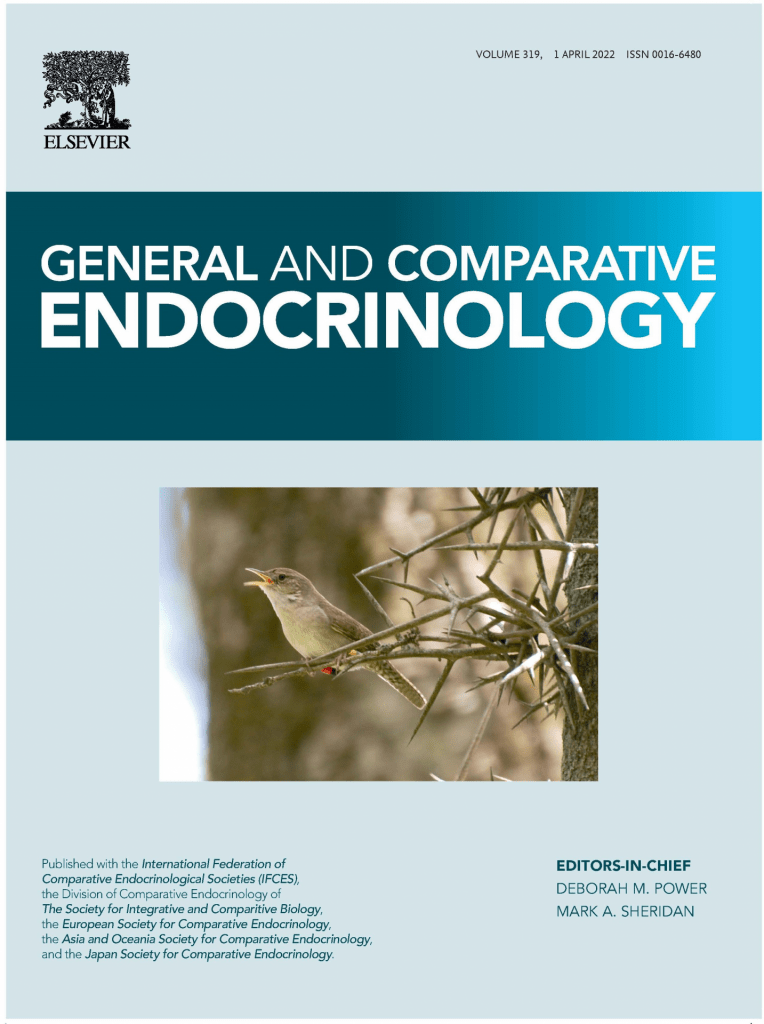
Rittinger et al. 2022. General and Comparative Endocrinology 318: 113964
Cover photograph by Rachael A. DiSciullo
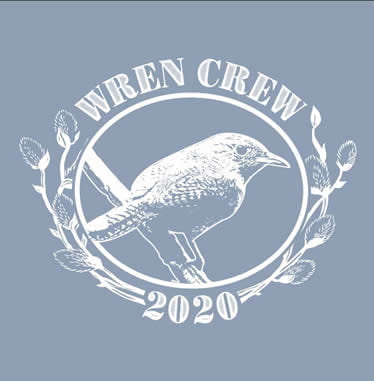
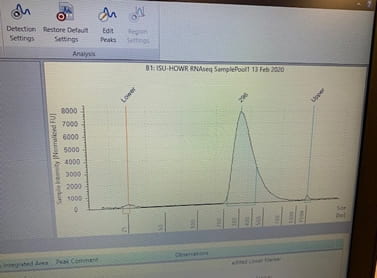
RNA and photograph by Anna Forsman
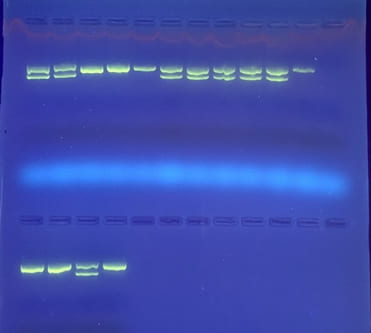
Gel and photograph by Madi Rittinger
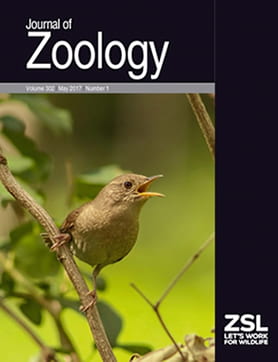
Will et al. 2017. Journal of Zoology 302(1): 1-7
Cover photograph by Dylan Poorboy
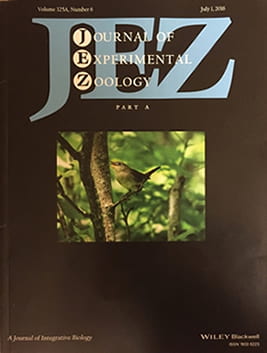
Strange et al. 2016. 325A(6): 347-359
Cover photograph by Paulo E. Llambias
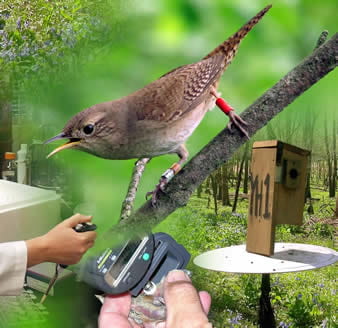
Forsman et al. 2008. Molecular Ecology 17(16): 3697-3706
Cover photograph montage by Shawn Billo
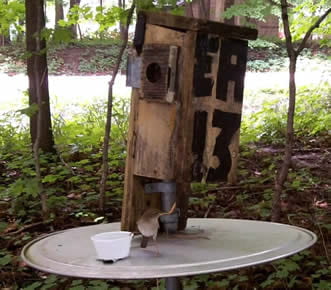
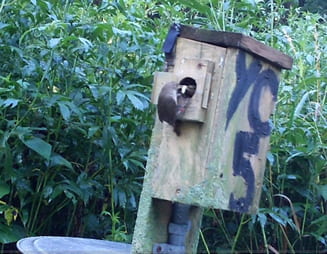
Photograph by E. Keith Bowers, 2013 video
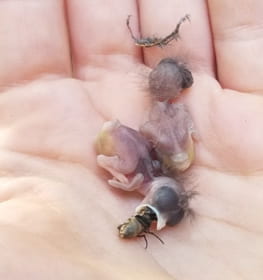
Photograph by Christine J. Poppe, 2019
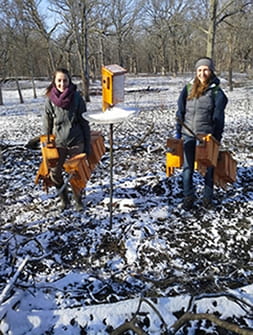
Meghan Strange and Erin Dorset
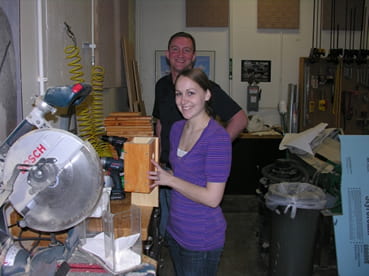
E. Keith Bowers and Christine J. Poppe
Photograph by Charles F. Thompson
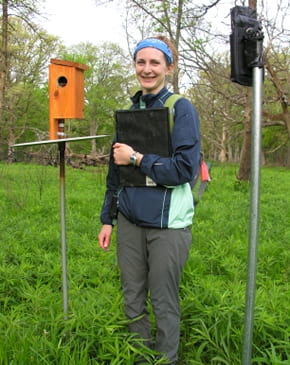
Erin Dorset with altered nestbox and digital camera
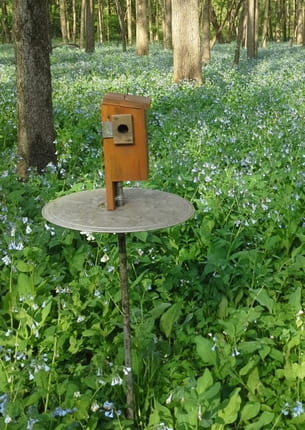
Mackinaw Study Area, Old ParkLands, 2015
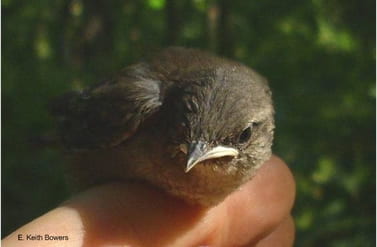
Mackinaw Study Area, 2009
Photograph by E. Keith Bowers
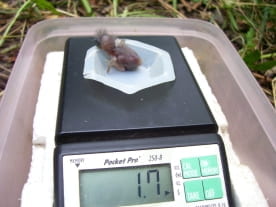
Mackinaw Study Area, 2010
Photograph by Cassie Lothery
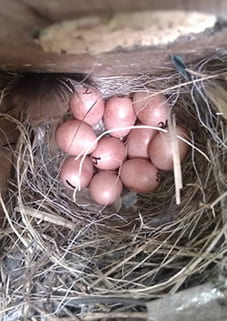
Mackinaw Study Area, 2012
Photograph by Christine J. Poppe
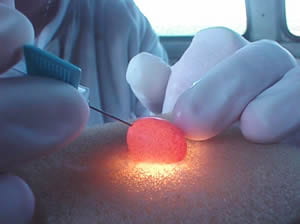
Lisa Ellis, East Bay Study Area, 1998
Photograph by H. Tak Cheung
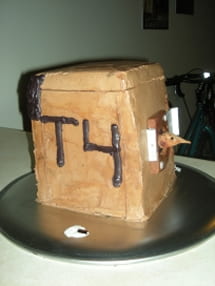
baked by Sandrine Clairardin
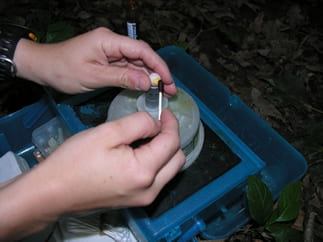
East Bay Study Area, 2008
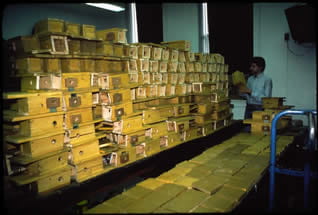
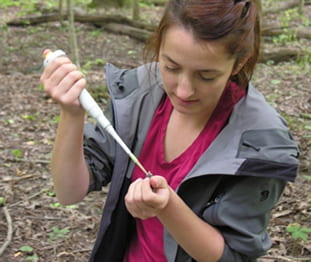
Meghan Strange, Mackinaw Study Area, 2013

Mackinaw Study Area, 2013
Photograph by Christine J. Poppe